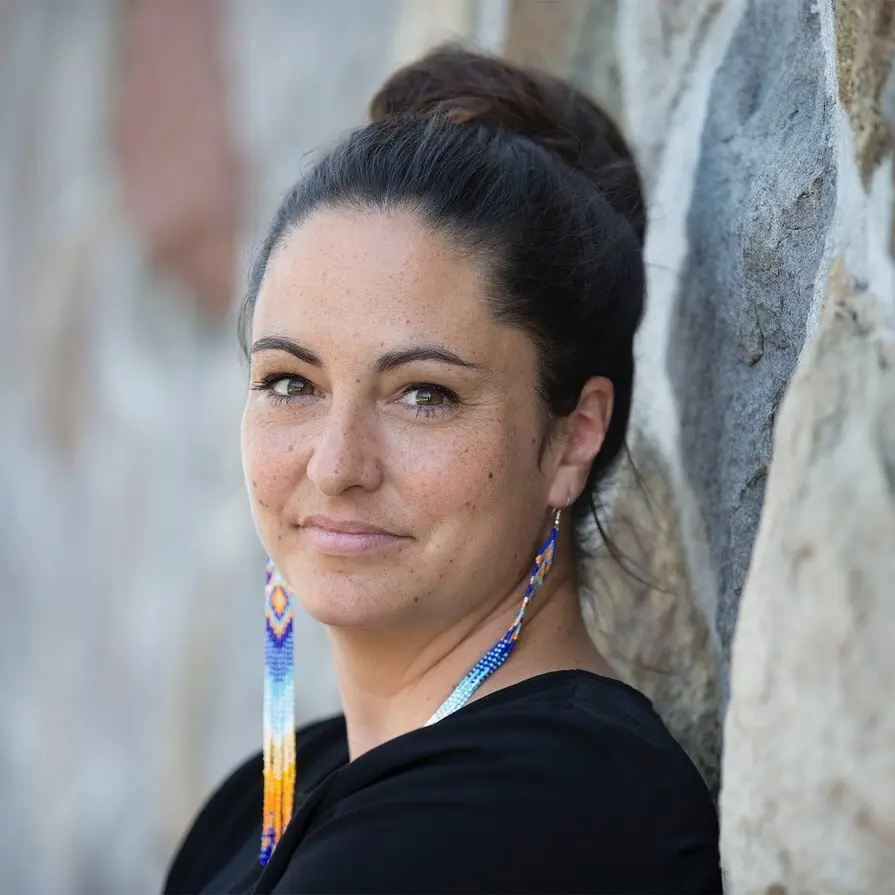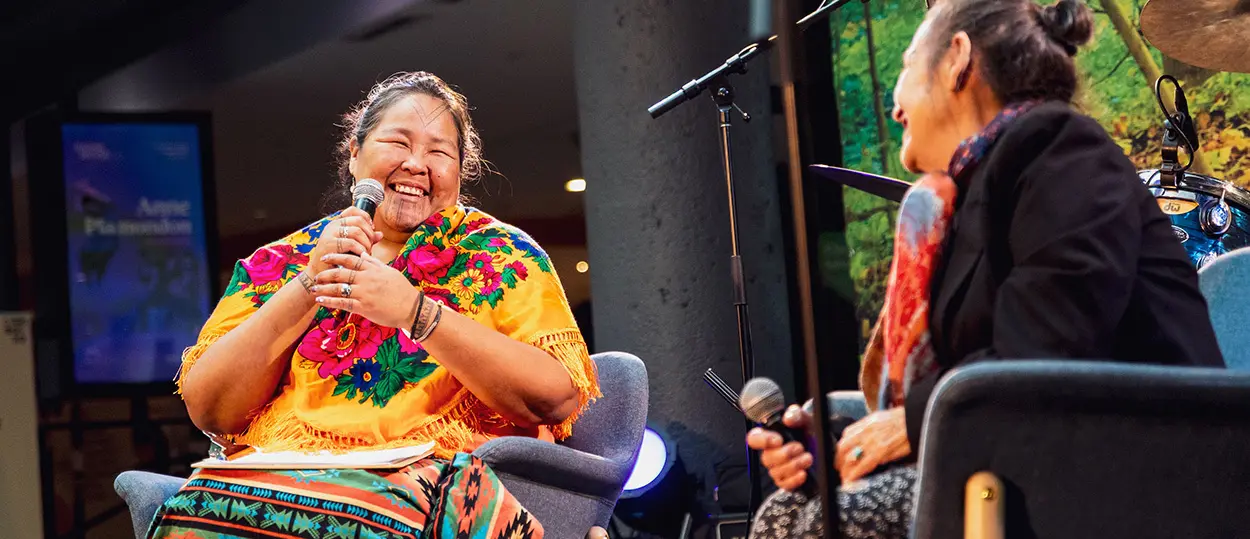Micro ouvert autochtone : Nina Segalowitz shines a spotlight on Indigenous cultures
You get the sense that Nina Segalowitz has a big smile on her face as you listen to her on the other end of the line, sharing her eagerness to shine a spotlight on Indigenous cultures during the fourth Micro ouvert autochtone (Indigenous Open Mic) event, taking place on November 9 and 10 in the Espace culturel Georges-Émile-Lapalme at Place des Arts.
The festive and family friendly event, which offers a wide range of free activities and services, has become a must for exploring various facets of Indigenous cultures: music, crafts, dance, poetry, storytelling, and gastronomy.
It’s an interesting playing field for curator Nina Segalowitz who, since the beginning of her career, has dedicated herself to fostering a better understanding between Indigenous and non-Indigenous people. “I try to be a bridge!” explains the Inuit artist and cultural consultant.
Invaluable cultural baggage
Born in 1973, Nina Segalowitz was not even a year old when she was taken from her biological parents in the Northwest Territories during the “Sixties Scoop.” She was never again able to see the woman who gave birth to her.
Raised by a family in Montreal, she grew up surrounded by diverse cultures. “My adoptive mother is from the Philippines, and my adoptive father is of Jewish descent,” she says. “I was raised in a very intercultural and very musical household. My father played the piano. When I was only three years old, my parents introduced me to the cello. I took lessons until I was 17.”
It was an important learning experience that allowed her to express herself in her career, which unfortunately has been tinged with racism. “When I played music with other children… they didn’t see me as an Inuit. They welcomed me as a musician,” she adds.
A few of the ever-present questions about her identity were finally answered one day. “I met my first member of the Indigenous community, here in Montreal, when I was 18. It wasn’t easy because I was experiencing a lot of racism, and I wondered, ‘What if my community doesn’t accept me… What am I going to be?’” she says.
This encounter was pivotal. “I began to learn our history. The ways of being, the ceremonies,” she recalls. “Twenty-five years ago, I started Inuit throat singing to connect with my biological mother’s side. Ten years ago, I started hand drumming to connect with my biological father. I saw that music helps people connect,” says the woman who today still excels as a throat singer, as well as on the hand drum and cello.
The importance of exchanges
Passionate about sharing, Nina Segalowitz gladly accepted the role of curator of the Micro ouvert autochtone for a second time this year. “Art and music allow us to express ourselves, to convey emotions. This gives people a chance to receive them gently,” says Segalowitz of the event, which attracted more than 3,500 people last year.
It's a great opportunity to connect, according to Segalowitz. “Both through traditional music—throat singing, drumming—and contemporary music,” she adds. “We’re showing the audience that we’re here, in 2024. We’re slowly becoming part of society, the community, and the consciousness.”
For the 2024 event, Segalowitz sought to highlight the connection between elders and young people. “It’s very important! In our communities, elders are not overlooked. Traditionally, they’re our encyclopaedias! Elders are highly respected, and young people are our future. Contemporary works can also show us how young Indigenous people see the world,” she explains.
Through the Micro ouvert autochtone, the curator wants, above all, to give Indigenous communities the opportunity to perform in a supportive environment. “These artists are unique, special, and they have something to say to the world. This is where you can see us shine, excel, and stand tall with pride. I also encourage the public to come see us afterwards and ask us questions. We’re here to share!”
Will we have the pleasure of seeing Nina Segalowitz perform a piece or a song at some point during this unifying event? “I always have my drum by my side. I might sing a song... We'll see! I often prefer to let other artists take the spotlight,” she says.

Jenůfa: Atom Egoyan reinvents Janáček’s opera
Article Interviews Show
Paul Piché, song by song: Sur le chemin des incendies still blazingly relevant
Ce n’est pourtant pas par effet de mode que Paul Piché a décidé de revisiter Sur le chemin des incendies; c’est plutôt grâce au succès inattendu d’une première mouture virtuelle durant la pandémie, suivie d’une tournée fort bien accueillie par le public.
Article Interviews Show
Magic in 2025: Illusion Meets New Tech
As Place des Arts is presenting Luc Langevin’s new show in July and August, we asked ourselves how the rise of artificial intelligence (AI) might be affecting the world of magic in 2025.
Article Interviews Show
Juste pour rire: From Nostalgia and New Faces to Le meilleur des décennies
This year, the Juste pour rire Festival is presenting Le meilleur des décennies in Théâtre Jean-Duceppe at Place des Arts. We spoke to comedian and screenwriter Suzie Bouchard, who will host Le meilleur des décennies and a show dedicated to the 2020s.
Article Interviews Festival
Kim O’Bomsawin: Telling Stories to Bring People Together
Abenaki sociologist, filmmaker, documentarian, and screenwriter Kim O’Bomsawin will be the curator of the next edition of the Micro ouvert autochtone. Learn more about this profoundly human creator.
Article Interviews Event


